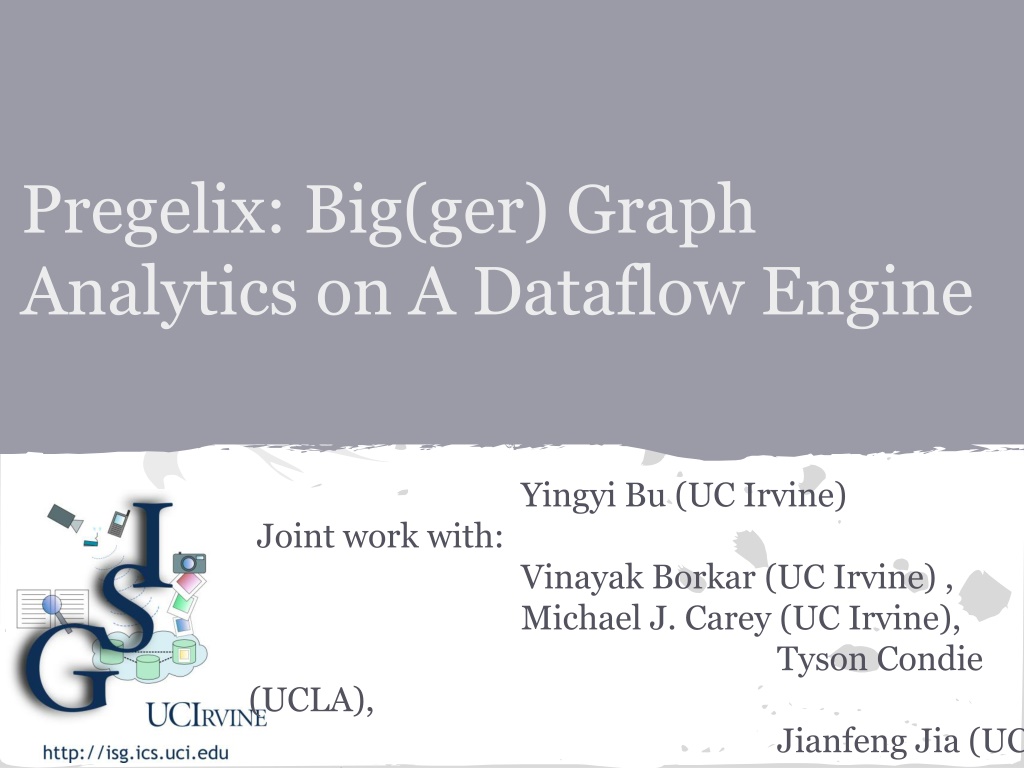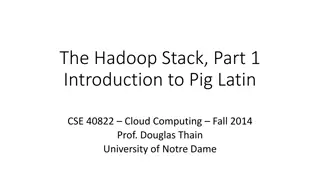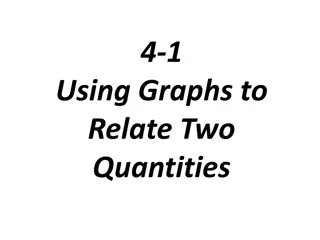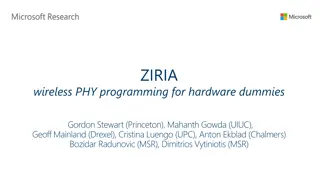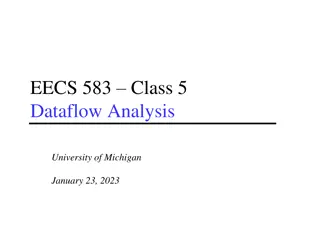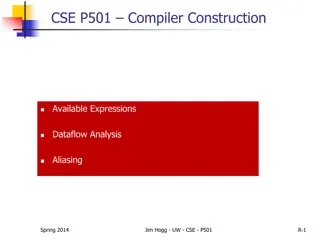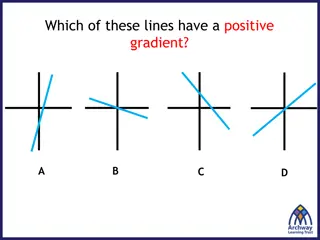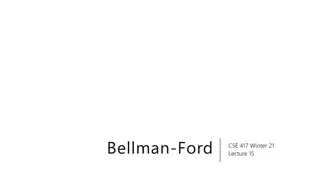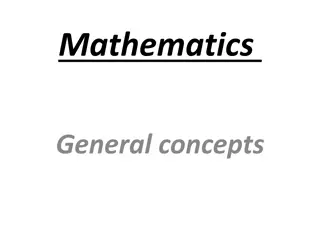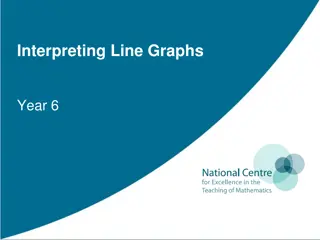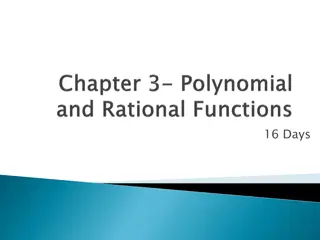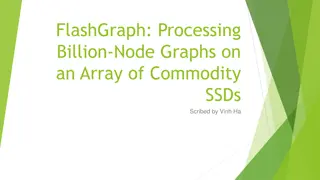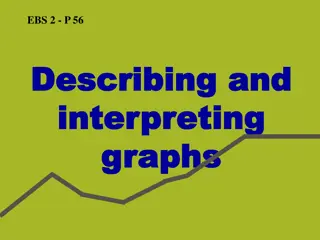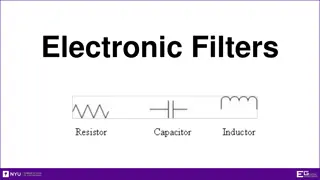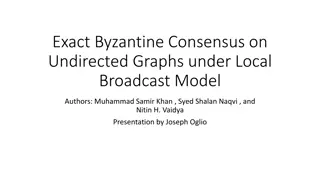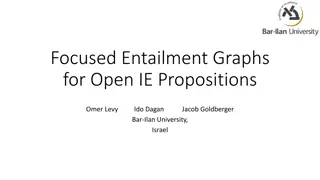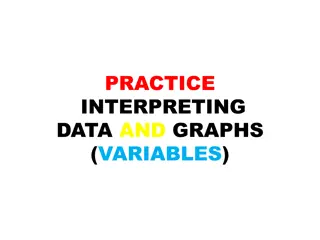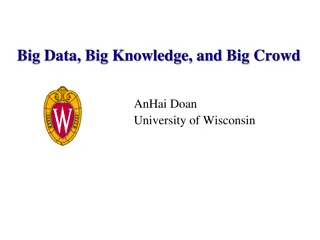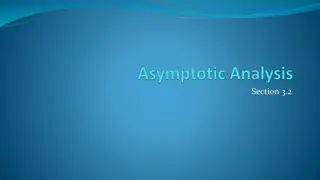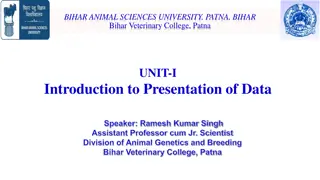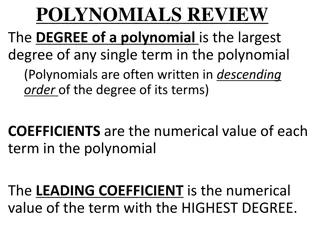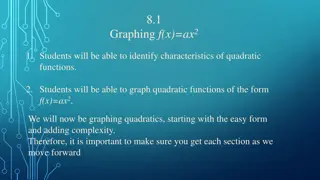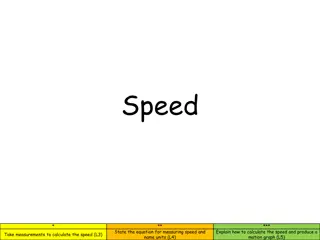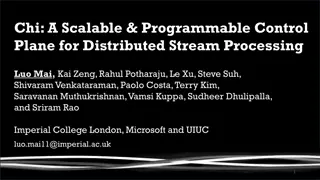Analyzing Big Graphs with Pregelix Dataflow Engine
Explore how Pregelix on a dataflow engine enables efficient processing of large graphs, providing insights on its system architecture, experimental results, and related work in graph analytics. Understand Pregel semantics, programming model, APIs, and graph mutations for effective analysis of big data graphs.
Download Presentation

Please find below an Image/Link to download the presentation.
The content on the website is provided AS IS for your information and personal use only. It may not be sold, licensed, or shared on other websites without obtaining consent from the author. Download presentation by click this link. If you encounter any issues during the download, it is possible that the publisher has removed the file from their server.
E N D
Presentation Transcript
Pregelix: Big(ger) Graph Analytics on A Dataflow Engine Yingyi Bu (UC Irvine) Joint work with: Vinayak Borkar (UC Irvine) , Michael J. Carey (UC Irvine), Tyson Condie (UCLA), Jianfeng Jia (UC Irvine)
Outline Introduction Pregel Semantics The Pregel Logical Plan The Pregelix System Experimental Results Related Work Conclusions
Introduction Big Graphs are becoming common o web graph o social network o ......
Introduction How Big are Big Graphs? o Web: 8.53 Billion pages in 2012 o Facebook active users: 1.01 Billion o de Bruijn graph: 3 Billion nodes o ...... Weapons for mining Big Graphs o Pregel (Google) o Giraph (Facebook, LinkedIn, Twitter, etc.) o Distributed GraphLab (CMU) o GraphX (Berkeley)
Programming Model Think like a vertex o receive messages o update states o send messages
Programming Model Vertex public abstract class Vertex<I extends WritableComparable, V extends Writable, E extends Writable, M extends Writable> implements Writable{ public abstract void compute(Iterator<M> incomingMessages); ....... } Helper methods o sendMsg(I vertexId, M msg) o voteToHalt() o getSuperstep()
More APIs Message Combiner o Combine messages o Reduce network traffic Global Aggregator o Aggregate statistics over all live vertices o Done for each iteration Graph Mutations o Add vertex o Delete vertex o A conflict resolution function
Pregel Semantics Bulk-synchronous o A global barrier between iterations Compute invocation o Once per active vertex in each superstep o A halted vertex is activated when receiving messages Global halting o Each vertex is halted o No messages are in flight Graph mutations o Partial ordering of operations o User-defined resolve function
Process-centric runtime superstep:3 halt: false master Vertex { id: 1 halt: false value: 3.0 edges: (3,1.0), (4,1.0) } Vertex { id: 3 halt: false value: 3.0 edges: (2,1.0), (3,1.0) } Vertex { id: 2 halt: false value: 2.0 edges: (3,1.0), (4,1.0) } Vertex{ id: 4 halt: false value: 1.0 edges: (1,1.0) } <3, 1.0> <2, 3.0> <4, 3.0> <5, 1.0> worker-1 worker-2 message <id, payload> control signal
Issues and Opportunities Out-of-core support I m trying to run the sample connected components algorithm on a large data set on a cluster, but I get a java.lang.OutOfMemoryError: Java heap space error. 26 similar threads on Giraph-users mailing list during the past year!
Issues and Opportunities Physical flexibility o PageRank, SSSP, CC, Triangle Counting o Web graph, social network, RDF graph o 8 machine school cluster, 200 machine Facebook data center One-size fits-all?
Issues and Opportunities Software simplicity Pregel GraphLab Giraph Hama ...... Vertex/map/msg data structures Task scheduling Memory management Message delivery Network management
The Pregelix Approach Relation Schema Vertex (vid, halt, value, edges) (vid, payload) Msg (halt, aggregate, superstep) GS vid payload 3.0 2 4 5 1 3.0 1.0 1.0 msg value halt edges vid vid=vid Msg 3.0 3.0 (3,1.0),(4,1.0) (2,1.0),(3,1.0) 1 false false NULL 1.0 1.0 3 edges vid 2 4 1 false 3.0 (3,1.0),(4,1.0) 3 false 3.0 (2,1.0),(3,1.0) halt false false value 2.0 1.0 NULL NULL NULL false 2.0 false 1.0 5 2 4 (3,1.0),(4,1.0) (1,1.0) (3,1.0),(4,1.0) (1,1.0) 3.0 3.0 Vertex
Pregel UDFs compute o Executed at each active vertex in each superstep combine o Aggregation function for messages aggregate o Aggregate function for the global states resolve o Used to resolve graph mutations
Logical Plan D7 vidcombine Vertexi+1 Msgi+1 Flow Data D3 D2 D2 Vertex tuples D4,D5,D6 D3 Msg tuples UDF Call (compute) D7 Msg tuples after combination D1 (V.halt =false || M.payload != NULL) M.vid=V.vid Msgi(M) Vertexi(V)
Logical Plan Flow Data GSi+1 D4 The global halting state contribution D10 D8 D9 superstep=G.superstep+1 D5 Values for aggregate Agg(aggregate) Agg(bool-and) D4 D8 The global halt state D5 D9 The global aggregate value D2,D3,D6 UDF Call (compute) GSi(G) D10 The increased superstep D1 Vertexi+1 Flow Data D6 Vertex tuples for deletions and insertions vid(resolve) D6 D2,D3,D4,D 5 UDF Call (compute) D1
The Pregelix System Pregel Physical Plans Vertex/map/msg data structures Operators Access methods Task scheduling Record/Index management Task scheduling Memory management Buffer Data exchanging management Message delivery Connection management Network management A general purpose parallel dataflow engine
The Runtime Runtime Choice? Hyracks Hadoop The Hyracks data-parallel execution engine o Out-of-core operators o Connectors o Access methods o User-configurable task scheduling o Extensibility
Parallelism msg value halt edges vid msg halt value edges vid 2 4 3.0 3.0 (3,1.0),(4,1.0) (2,1.0),(3,1.0) 1 false false NULL 1.0 1.0 (3,1.0),(4,1.0) (1,1.0) 3.0 3.0 2.0 1.0 false false 3 5 NULL NULL NULL vid=vid vid=vid vid msg edges msg edges vid halt false false value 2.0 1.0 Vertex-1 halt false false value 3.0 3.0 Vertex-2 vid 2 4 vid 1 3 (3,1.0) (4,1.0) (1,1.0) (3,1.0) (4,1.0) (2,1.0),(3,1.0) 3.0 3.0 1.0 2 4 3 5 1.0 Msg-2 Msg-1 msg vid vid msg 1.0 3.0 3.0 1.0 3 4 2 5 output-Msg-2 output-Msg-1 Worker-1 Worker-2
Physical Choices Vertex storage B-Tree LSM B-Tree Group-by o Pre-clustered group-by o Sort-based group-by o HashSort group-by Data redistribution o m-to-n merging partitioning connector o m-to-n partitioning connector Join o Index Full outer join o Index Left outer join
Data Storage Vertex o Partitioned B-tree or LSM B-tree Msg o Partitioned local files, sorted GS o Stored on HDFS o Cached in each worker
Physical Plan: Message Combination vidcombine vidcombine vidcombine vidcombine vidcombine vidcombine (Sort-based) (Sort-based) (HashSort) (Sort-based) (HashSort) (HashSort) vidcombine vidcombine vidcombine (Sort-based) vidcombine vidcombine (HashSort) vidcombine (Sort- based) (HashSort) (Sort-based) (HashSort) Sort-Groupby-M-to-N-Partitioning HashSort-Groupby-M-to-N-Partitioning vidcombine vidcombine vidcombine vidcombine vidcombine vidcombine (Preclustered ) (Preclustered ) (Preclustered ) (Preclustered ) (Preclustered ) (Preclustered ) vidcombine vidcombine vidcombine (Sort-based) vidcombine vidcombine (HashSort) vidcombine (Sort- based) (HashSort) (Sort-based) (HashSort) Sort-Groupby-M-to-N-Merge-Partitioning HashSort-Groupby-M-to-N-Merge-Partitioning M-to-N Partitioning Connector M-To-N Partitioning Merging Connector
Physical Plan: Message Delivery D12 Function Call (NullMsg) D2 -- D6 Vidi+1 (halt = false) UDF Call (compute) D1 D11 D2 -- D6 UDF Call (compute) (V.halt = false || M.paylod != NULL) D1 Index Left Outer Join Index Full Outer Join Merge (choose()) M.vid=I.vid M.vid=V.vid M.vid=V.vid Msgi(M) Vertexi(V) Msgi(M) Vidi(I) Vertexi(V)
Caching Pregel, Giraph, GraphLab all have caches for this kind of iterative jobs. What do you do for caching? Iteration-aware (sticky) scheduling? o 1 Loc: location constraints Caching of invariant data? o B-tree buffer pool -- customized flushing policy: never flush dirty pages o File system cache -- free
Experimental Results Setup o Machines a UCI cluster ~ 32 machines 4 cores, 8GB memory, 2 disk drives. o Datasets Yahoo! webmap (1,413,511,393 vertice, adjacency list, ~70GB) and its samples. The Billions of Tuples Challenge dataset (172,655,479 vertices, adjacency list, ~17GB), its samples, and its scale-ups. o Giraph Latest trunk (revision 770) 4 vertex computation threads, 8GB JVM heap
Execution Time In-memory In-memory Out-of-core Out-of-core
Execution Time In-memory In-memory Out-of-core Out-of-core
Execution Time In-memory In-memory Out-of-core Out-of-core
Plan Flexibility In-memory Out-of-core 15x
Software Simplicity Lines-of-Code o Giraph: 32,197 o Pregelix: 8,514
Related Work Parallel Data Management o Gama, GRACE, Teradata o Stratosphere (TU Berlin) o REX (UPenn) o AsterixDB (UCI) Big Graph Processing Systems o Pregel (Google) o Giraph (Facebook, LinkedIn, Twitter, etc.) o Distributed GraphLab (CMU) o GraphX (Berkeley) o Hama (Sogou, etc.) --- Too slow!
Conclusions Pregelix offers: o Transparent out-of-core support o Physical flexibility o Software simplicity We target Pregelix to be an open-source production system, rather than just a research prototype: o http://pregelix.ics.uci.edu
